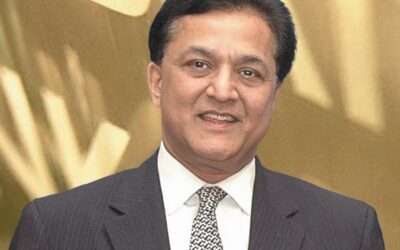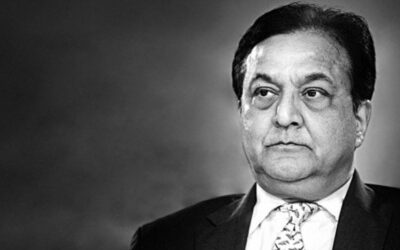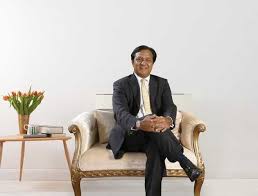Not only do YES Bank’s efforts in digitalization re-affirm its commitment to the country’s grand goal of a Digital India but they also reinstate the role of an enigmatic leader like Rana Kapoor, former MD of the YES Bank, who showed us how initiative, inclusion and innovation are the forces that will take India to its desirous future
The world is moving to an exciting future ahead given the continuing technology boom. This future is one that is anticipated to be enshrouded by digital as the core highway of communication, transfer and for access- be it of anything from information to the way we pay for things. In the wake of the ‘cashless economy,’ countries like Finland, Norway, South Korea, Sweden have taken initiatives and already have potential to be the cashless leaders of the world for decades to come. Rana Kapoor, the former CEO of India’s fourth largest private sector bank, was a visionary who had already envisioned a promising future in India with digital pathways- taking up a crucial role in our country’s transition to a cashless economy. He highlighted some key areas like the role of digital technology in financial inclusion, role of NPCI in giving pace to the transition and the ways in which financial and banking institutions could contribute to a cashless economy.
India’s journey to a digital economy has begun just this past decade; YES Bank under Rana Kapoor’s leadership has been a leader in this given its innovative footing in curating various solutions for easy money transactions digitally in India. The Bank soon became the cornerstone to promote the popularity of cashless transactions in the Indian landscape- a country that has classically been operating only in paper currency. In creating a road-map for faster, easier and effective digital and smart-card payments, the bank identified the favourable opportunity with Digital payments estimated to reach $1 trillion by year 2023 (according to a report by Credit Suisse) owing to a growth in smart-phone usage. This was also confirmed by the 2016 Indian bank-note Demonetization and the subsequent policy measures that brough out some of the crucial issues in relation to handling hard-cash. While India was striving to become a technologically advanced and a knowledge-based economy, YES Bank was weaving smart solutions to help make this shift.
Having identified how smart-phones were anchoring digital payments in the country, YES Bank engineered its product, the YES Bank slim-sleeve sim card with an intent of tapping into 200 million people who were using mobiles in India but not feature phones that enabled payments. Taking financial inclusion seriously with their new innovation, the sim cards allowed users of these non-feature phones to participate in financial transactions without even needing an internet connection.
Bringing the convenience of banking to mobile phones, YES Bank’s application has many exciting features for its users- right from getting them an experience of augmented reality in location bank branches and ATMs to making all kind of payments just in a few taps. Fingerprint access designs take over the traditional login credentials system, to take digital convenience another step ahead. The Bank’s digital banking segment has devised solutions with OR code-based payments, Dynamic VPA collections, solid Payment Gateways and UPI transactions. Providing payment solutions using digital technologies, they have monumented API Banking & Unified Payment interface for B2B & B2C that has been the next-generation digital payment system in India with Phone-linked payments, any-bank account debit and 1-click 2 factor authentication facilities. The bank has made the most in the growing cashless space in Indian economy by creating the widest range of offerings in the digital payments space through multiple usage cases with its own branded offering or strategic partnerships with industry leaders, forums, start-ups etc.
In light of the present circumstances with the 2020 pandemic, the Bank continues to live by Rana Kapoor’s vision in creating digital pathways to best help societies with solutions. YES bank has partnered with various schools and campuses to help payment of fees and other expenses through contact-less modes during the upsurging pandemic with secure digital alternatives. Some notable institutions like the Emmanuel English Higher Secondary School in Assam, Shri Ram Centennial School in Agra, Uttam Institute of Management Studies in Agra, G. D. Goenka Public School – Agra and many more have been able to make colloquial achievements of going 100% cashless and be leaders in technological usage with YES Bank powered transformation. These institutions now enjoy the benefits of round-the-clock payments with UPI apps, zero costs of transactions, seamless VPA/QR code-based transactions without the need to integrate with any payment system, dashboards to track updates and reports- bringing safety, control, comfort and cost-efficiencies.
YES bank has further been part of an ambitious project to digitize the city of Nashik, launching an array of cashless payment solutions for Nashik Smart City, in partnership with the Nashik Municipal Corporation (NMC). As a part of this project, YES BANK has digitized the payments for the Govt. services carried out at NMC’s Citizen Facilitation Centres (CFC) with its program partner EasyPay. A mobile app backs this drive, helping retail merchants make and receive payments with their registered mobile numbers and that of the residents. Transactions can now easily take place by OTPs without needing any other efforts.
While Nasik is on way becoming one of the pioneering cities to turn smart, seamless and secure with their cashless transition shift, Udaipur and Pondicherry are next in line- on way to be incorporated under Rana Kapoor’s smart-city proposition. Not only do YES Bank’s efforts in digitalization re-affirm its commitment to the country’s grand goal of a Digital India but they also reinstate the role of an enigmatic leader like Rana Kapoor, former MD of the YES Bank, who showed us how initiative, inclusion and innovation are the forces that will take India to its desirous future.
Source: Blog.Tvon




